GK Compilation from UPSC CISF Exam 2019:
1. The Silent Valley is located in which one of the following states?
(a) Himachal Pradesh
(b) Jammu and Kashmir
(c) Jharkhand
(d) Kerala
Ans: Kerala (d)
2. Which one of the following crops is not a Kharif crop?
(a) Rice
(b) Maize
(c) Wheat
(d) Soya Bean
Ans: Wheat (c)
3. What is the name of the first research station established by the Government of India for the conduct of research at Antarctica?
(a) Dakshin Gangotri
(b) Uttar Gangotri
(c) Bharati
(d) Maitri
Ans: Dakshin Gangotri (a)
4. Darling Downs is a?
(a) grassland in Australia
(b) barren land in South America
(c) tropical rainforest in South America
(d) temperate forest in Canada
Ans: grassland in Australia (a)
5. Hirakud Dam is built across which river?
(a) Kaveri
(b) Mahanadi
(c) Krishna
(d) Godavari
Ans: Mahanadi (b)
6. Which one of the following countries does not experience Mediterranean climate?
(a) Syria
(b) Jordan
(c) Lebanon
(d) Israel
Ans: Jordan (b)
7. Which one of the following observations regarding rivers is not made by the Central Water Commission operating through its network of hydro-meteorological stations?
(a) Water level (gauge)
(b) Silt
(c) Water quality
(d) Shifting in river channel
Ans: Shifting in river channel (d)
8. Which one of the following is the largest country of Europe in terms of area?
(a) Spain
(b) Portugal
(c) Germany
(d) France
Ans: France (d)
9. Match List-I with List-II and select the correct answer using the code given below the Lists:
List-I (Convention)
A) Basel Convention
B) Rotterdam Convention
C) Stockholm Convention
D) Minamata Convention
List-II (Primarily related to)
1) Organic pollutants
2) Mercury
3) Hazardous wastes
4) Pesticides
Code:
(a) A-3 B-1 C-4 D-2
(b) A-2 B-4 C-1 D-3
(c) A-3 B-4 C-1 D-2
(d) A-2 B-1 C-4 D-3
Ans: A-3 B-4 C-1 D-2 (c)
10. The Indian Universities Commission appointed by Lord Curzon in 1902 was headed by
(a) Sir William hunter
(b) Sir Thomas Raleigh
(c) Lord Haldane
(d) Dr. Michael Sadler
Ans: Sir Thomas Raleigh (b)
11. Who was the founder of Brahma Samaj of India?
(a) Raja Ram Mohan Roy
(b) Debendranath Tagore
(c) Keshab Chandra Sen
(d) Ishwar Chandra Vidyasagar
Ans: Raja Ram Mohan Roy (a)
12. Aurangzeb had compiled the greatest digest of Islamic law called?
(a) Fatawa-i-Alamgiri
(b) Fatawa-i-Jahandri
(c) Miraz-i-Mughals
(d) Fatah-i-saltan
Ans: Fatawa-i-Alamgiri (a)
13. The States Reorganization Commission (SRC) of 1953 was consisted of
(a) S. K. Dar, Justice Fazal Ali and K. M. Panikkar
(b) Sardar Vallabhbhai Patel, K. M. Panikkar and S. K. Dar
(c) Justice Fazal Ali, Hridyanath Kunzru and K. M. Panikkar
(d) K. M. Panikkar, Sardar Vallabhbhai Patel and Justice Fazal Ali
Ans: Justice Fazal Ali, Hridyanath Kunzru and K. M. Panikkar (c)
14. Which one of the following statements are true of Shah Alam II?
1. He joined Mir Jaffar of Bengal to fight the British.
2. He joined Mir Qasim of Bengal and Siraj ud-Daulah of Awadh to fight the British.
3. He was defeated by the British.
4. He lived at Allahabad as a pensioner of the British.
Select the correct answer using the code given below.
(a) 2, 3 and 4
(b) 1, 2 and 4
(c) 1, 3 and 4
(d) 2 and 3 only
Ans: 2, 3 and 4 (a)
15. Which one of the following statements are true of Bahadur Shah I?
1. He succeeded Aurangzeb.
2. He had to fight his brothers for the throne.
3. He reversed many policies of his predecessor.
4. He ordered for the destruction of some temples.
Select the correct answer using the code given below.
(a) 1, 2 and 3
(b) 2, 3 and 4
(c) 2 and 3 only
(d) 1 and 4
Ans: 1, 2 and 3 (a)
16. The Diwan-i-Aam referred to
(a) a collection of popular poetry
(b) the hall of public audience
(c) the senior most citizen
(d) a rank in the Mughal government
Ans: the hall of public audience (b)
17. Who issued an Independence Proclamation in 1930 in the name of the ‘Indian Republican Army’?
(a) Sachindra Nath Sanyal
(b) Chandra Shekar Azad
(c) Surya Sen
(d) Bhagat Singh
Ans: Surya Sen (c)
18. The Congress leader Swami Ramananda Tirtha was active in the freedom struggle in which of the following Princely States?
(a) Kashmir
(b) Mysore
(c) Baroda
(d) Hyderabad
Ans: Hyderabad (d)
19. The basis of the failed Gandhi-Jinnah Talks of 1944 was
(a) Wavell Plan
(b) Partition of India
(c) Rajagopalachari Formula
(d) Cabinet Mission Proposals
Ans: Rajagopalachari Formula (c)
20. In 1922, who referred to Lenin as ‘the Dear Leader of the Kisans’
(a) Swami Vidyananda
(b) Swami Sahajananda
(c) Baba Ramchandra
(d) Jawahar Lal Nehru
Ans: Baba Ramchandra (c)
21. Who among the following translated the Manusmriti into English for the first time?
(a) Sir William Jones
(b) Charles Wilkins
(c) N. B. Halhed
(d) Warren Hastings
Ans: Sir William Jones (a)
22. ‘The Asiatic Society of Bengal’ was founded by Sir William Jones in the year?
(a) 1782
(b) 1784
(c) 1786
(d) 1791
Ans: 1784 (b)
23. In 1942, the Prati Sarkarwas started in
(a) Belgaum in Karnataka
(b) Chittagong in Bengal
(c) Guntur in Andhra Pradesh
(d) Satara in Maharashtra
Ans: Satara in Maharashtra (d)
24. With which of the following ‘Tin Kathia’ system was associated?
(a) Tea planters of Assam
(b) Indigo cultivators of Champaran
(c) A practice of agriculture among Munda tribes
(d) A form of land revenue in central provinces
Ans: Indigo cultivators of Champaran (b)
25. In 1967, which language was added to the list of major recognized Indian languages by a constitutional amendment
(a) Pashto
(b) Sindhi
(c) Garo
(d) Konkani
Ans: Sindhi (b)
26. Which one of the following Acts provided for the inclusion of certain additional ‘non-official’ members in the Executive Council of the Governor-General for the first time?
(a) The Indian Councils Act, 1861
(b) The Government of India Act, 1919
(c) The Government of India Act, 1858
(d) The Morely-Minto Reforms, 1909
Ans: The Indian Councils Act, 1861 (a)
27. Which of the following legislatures passed the Indian Independence Act, 1947?
(a) The British Parliament
(b) The Indian Parliament
(c) The British-Indian Parliament
(d) The Central Legislative Assembly
Ans: The British Parliament (a)
28. The Preamble to the Constitution of India, as adopted on 26th November, 1949, originally described India as a
(a) Sovereign Republic
(b) Democratic Republic
(c) Socialist Republic
(d) Secular Republic
Select the correct answer using the code given below.
(a) 1 only
(b) 1 and 2 only
(c) 2, 3 and 4 only
(d) 1, 2, 3 and 4
Ans: 1 and 2 only (b)
29. Who has coined the term ‘global village’?
(a) Hans J. Morgenthau
(b) E. H. Carr
(c) Marshall McLuhan
(d) Richard Falk
Ans: Marshall McLuhan (c)
30. Which of the following statements in respect of the Union of India’ is/are correct?
1. The Union of India is more like the Canadian Federation than American.
2. Residuary powers are vested in the Union.
3. States of the Union of India have constitutional right to secede.
Select the correct answer using the code given below.
(a) 1 only
(b) 1 and 2 only
(c) 2 and 3 only
(d) 1, 2 and 3
Ans: 1 and 2 only (b)
31. Which constitutional Amendment Act enjoined upon the state to provide free and compulsory education to all children of the age of six to fourteen years?
(a) The 85th Amendment Act
(b) The 86th Amendment Act
(c) The 87th Amendment Act
(d) The 88th Amendment Act
Ans: The 86th Amendment Act (b)
32. Which Article of the Constitution of India provides for the right of minorities to establish and administer educational institutions?
(a) Article 27
(b) Article 28
(c) Article 29
(d) Article 30
Ans: Article 30 (d)
33. Which one of the following is not a provision under the Directive Principles of State Policy
(a) Right to work
(b) Provision for early childhood care and education to children below the age of six years
(c) Promoting harmony and spirit of common brotherhood amongst all the people of India
(d) Separation of Judiciary from Executive
Ans: Promoting harmony and spirit of common brotherhood amongst all the people of India (c)
34. Who among the following has authored Imperialism : the Highest stage of Capitalism?
(a) Karl Marx
(b) Antonio Gramsci
(c) V. I. Lenin
(d) Luxemberg
Ans: V. I. Lenin (c)
35. Which one of the following cell organelles synthesizes its own proteins involving genes present in its DNA?
(a) Endoplasmic reticulum
(b) Plasma membrane
(c) Plastid
(d) Lysosome
Ans: Plastid (c)
36. Which one of the following is not a female reproductive organ of flower?
(a) Style
(b) Ovary
(c) Pollen
(d) Stigma
Ans: Pollen (c)
37. In which part of the Heart and circulatory system of human body does deoxygenated blood flow?
(a) Aorta
(b) Pulmonary vein
(c) Left atrium
(d) Vena cava
Ans: Vena cava (d)
38. Catalytic converters transforms waste gases from the engines of many cars into carbon dioxide, nitrogen and water. The catalyst is made of
(a) platinum and copper
(b) molybdenum and copper
(c) platinum and rhodium
(d) rhodium and molybdenum
Ans: platinum and rhodium (c)
39. The number of elements in the lanthanoids of the periodic table is
(a) 8
(b) 18
(c) 14
(d) 32
Ans: 14 (c)
40. The horizontal component of the earth’s magnetic field is zero at
(a) magnetic equator
(b) magnetic poles
(c) South and North poles
(d) nowhere
Ans: magnetic poles (b)
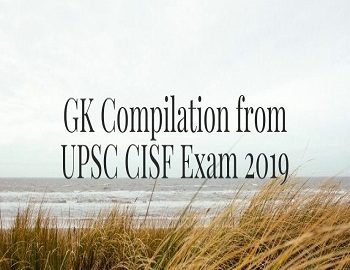
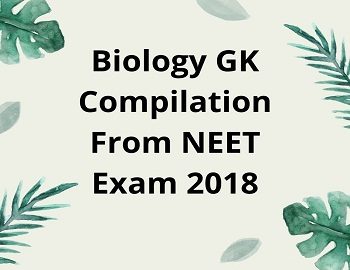
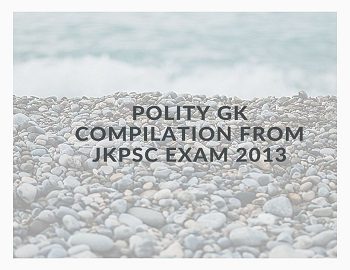
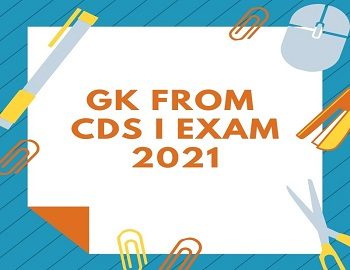

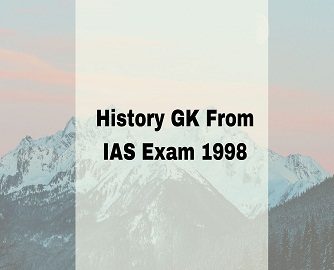
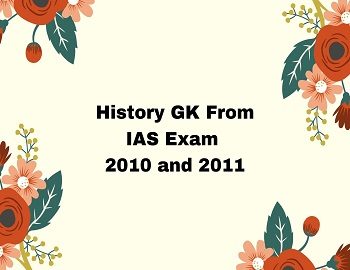
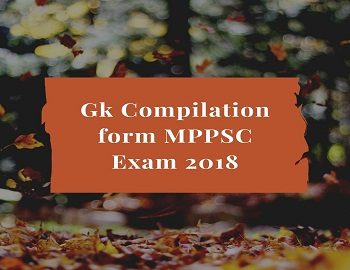
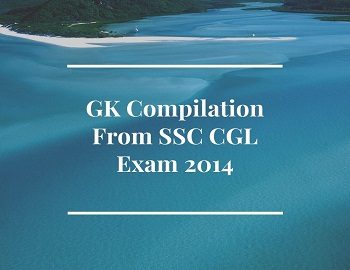
Comments (No)